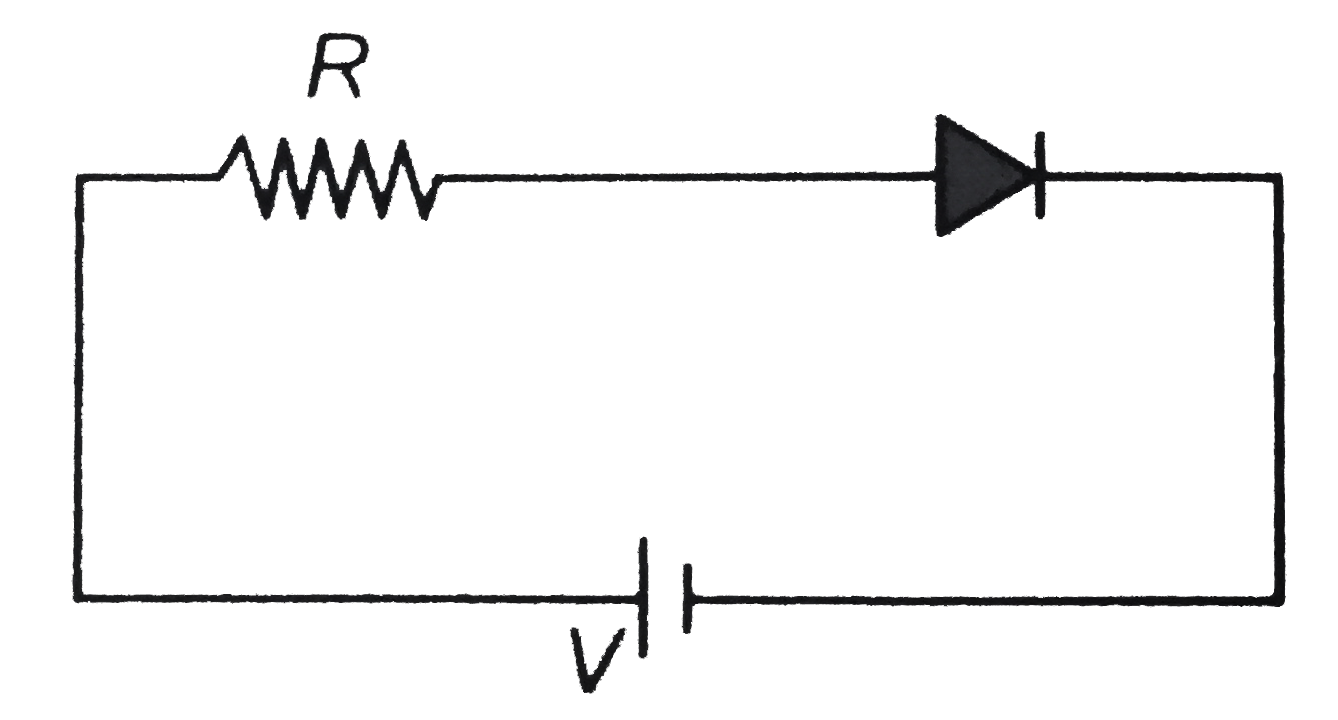In a PN -junction diode
High potential at N side and low potential at P side
High potential at P side and low potential at N side
P and N both are at same potential
Undetermined
The correct Answer is:A
To solve the question regarding the potential difference in a PN-junction diode, we can follow these steps:
1. Understanding the PN-Junction Diode:
- A PN-junction diode consists of two regions: the P-type (positive) and the N-type (negative). The P-type region has an abundance of holes (positive charge carriers), while the N-type region has an abundance of electrons (negative charge carriers).
2. Analyzing the Potential:
- In a PN-junction diode, the P-side is typically at a higher potential compared to the N-side. This is due to the difference in charge carriers and the built-in electric field that forms at the junction when the diode is formed.
3. Identifying the Potential Levels:
- At the P-side, the potential is higher because it has more positive charge carriers (holes).
- At the N-side, the potential is lower due to the presence of more negative charge carriers (electrons).
4. Evaluating the Options:
- Given the options:
1. High potential at N side and low potential at P side
2. High potential at P side and low potential at N side
3. P and N both are at the same potential
4. Undetermined
- From our analysis, we can conclude that the correct option is:
- High potential at P side and low potential at N side (Option 2).
Final Answer:
The correct option is: High potential at P side and low potential at N side.
- A PN-junction diode consists of two regions: the P-type (positive) and the N-type (negative). The P-type region has an abundance of holes (positive charge carriers), while the N-type region has an abundance of electrons (negative charge carriers).
- In a PN-junction diode, the P-side is typically at a higher potential compared to the N-side. This is due to the difference in charge carriers and the built-in electric field that forms at the junction when the diode is formed.
- At the P-side, the potential is higher because it has more positive charge carriers (holes).
- At the N-side, the potential is lower due to the presence of more negative charge carriers (electrons).
- Given the options:
1. High potential at N side and low potential at P side
2. High potential at P side and low potential at N side
3. P and N both are at the same potential
4. Undetermined
- From our analysis, we can conclude that the correct option is:
- High potential at P side and low potential at N side (Option 2).
The correct option is: High potential at P side and low potential at N side.
Similar Questions
Knowledge Check
- Question 1 - Select One
In a p−n junction diode, the barrier potential opposes diffusion of
Aminority carrier in both regions onlyBmajority carriers onlyCelectrons in p regionDholes in p region
For the given circuit of PN-junction diode, which of the following statements is correct?
 View Solution
View SolutionIn a forward biased PN- junction diode, the potential barrier in the depletion region is of the from...
View SolutionIn a p- n junction diode not connected to any circuit,
View SolutionIn a p−n junction diode, change in temperature due to heating
View SolutionIn a p−n junction diode, change in temperature due to heating
View SolutionWhich of the following statement is wrong regarding a p - n junction diode
View SolutionIn a p-n junction diode the value of drift current through depletion region
View Solution

